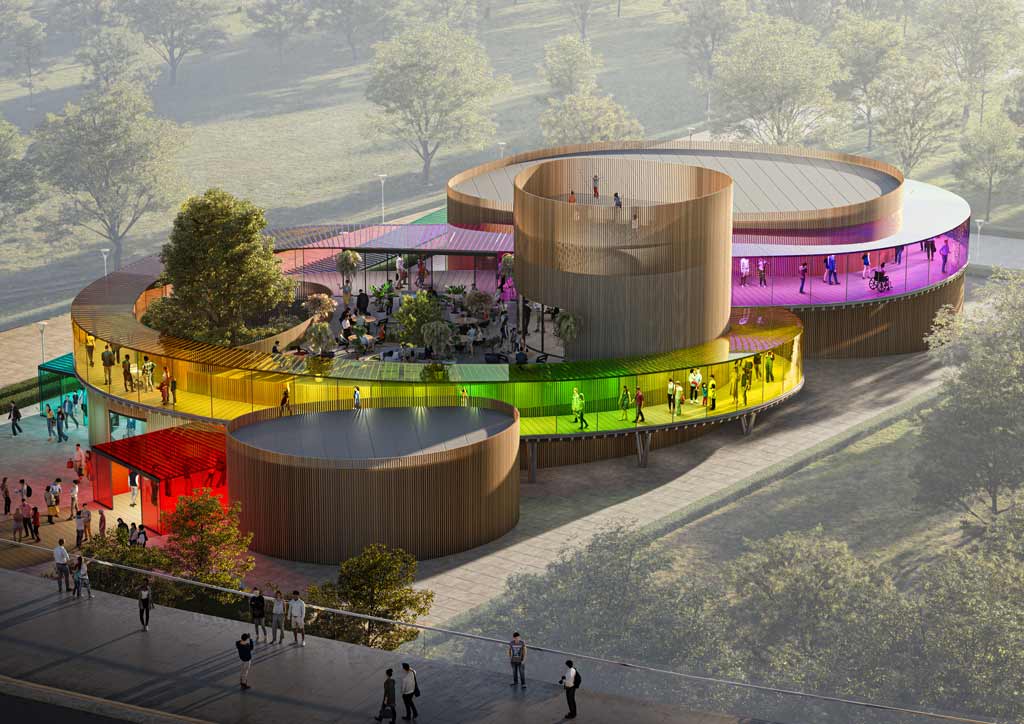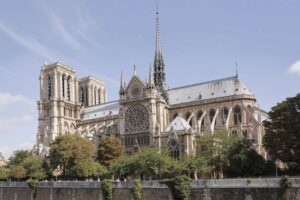Colombia provides a memorable display of its culture, literature, and innovation at Expo Osaka 2025, which is praised for turning national identity into tangible form. The Colombia Pavilion, often known as the “Ice Cube,” is a glistening, modular construction that experiments with perception, texture, and light that was designed by MORF Inc.
This is more than just a pavilion; it is a cultural poem that tells the world about Colombia using steel, polycarbonate, and light.
The Spark of Literature: Márquez’s Ice
A famous scene in Gabriel García Márquez’s One Hundred Years of Solitude, where a young kid encounters ice for the first time, serves as the inspiration for the pavilion’s architecture. That surprise, the mystical and fantastical aspect of coming across something unexpected, serves as the pavilion’s overarching metaphor.
The conflict between Colombia’s tropical heritage and the icy vision of ice is captured in MORF Inc.’s architectural translation, allowing visitors to perceive the familiar in new ways.

Image source ballinipitt.lu
Movement, Shadow, and Light in the “Ice Cube” Facade
The dynamic cube-like exterior of the pavilion, which is made up of a number of semi-transparent, translucent polycarbonate panels positioned at different angles, is its most remarkable feature. They gently shimmer in the Osaka sunlight during the day, and at night, programmable LEDs turn the structure into a dynamic, illuminating show.
The pavilion feels alive because of the cubes’ changing shadows and reflections, which resemble the fluidity of moving ice. Visitors observe the construction in action in addition to seeing it.
Engineering Style: Sustainability and Prefabrication
The pavilion is an engineering marvel beneath its lyrical exterior. The problem of Osaka’s soft soil is resolved by a floating foundation supported by a light steel frame. The construction can be constructed swiftly, effectively, and with the least amount of disturbance to the environment thanks to prefabrication.
Additionally, the pavilion is modular and relocatable, meaning that it may be disassembled and reassembled elsewhere after Expo 2025, extending its lifespan and cutting down on waste. This is in line with Colombia’s dedication to ecologically conscious design and Expo’s sustainability objectives.
Entering: The Multisensory Experience of Colombia
Visitors are greeted by warmth and aroma as they walk through the chilly, crystalline facade; the entrance is filled with the distinct aroma of Colombian coffee. A coffee shop transforms the first step inside into a sensory greeting by providing a true sense of Colombian culture.
The inside offers a rich cultural experience:
The Yellow Butterfly Guide, a recurrent motif in Márquez’s artwork, guides guests through interactive narrative exhibits.
The six tourist destinations in Colombia are highlighted in Regional Showcases, which use images, sounds, and textures to take visitors from the Amazon rainforest to the Andes.
Innovation Hubs serve as a showcase for Colombia’s technological, sustainable development, and biodiversity conservation advancements.
The “Country of Beauty,” Colombia
“Country of Beauty,” the pavilion’s central theme, goes beyond aesthetics. It honours the variety of Colombia’s landscapes, languages, and ways of life. Its vibrant culture, which includes everything from dance and music to handicrafts and cuisine, is promoted for visitors to experience as well as observe.
Opportunities for Cultural and Economic Exchange
The pavilion, which is 875 m² in size, is also a wise investment. It consists of:
exhibition spaces for inventions and goods from Colombia.
A 35-square-meter store where customers may buy handicrafts, clothing, and coffee.
locations to network for cultural collaborations, trade meetings, and tourism marketing (ProColombia, Presidencia.gov.co).
By combining economic opportunity with cultural diplomacy, Colombia makes the most of the pavilion’s influence even after Expo is over.
Architecture as Performance: Nighttime Transformation
The “Ice Cube” really comes to life at dusk. Each cube becomes a component of a visual symphony with programmable lighting, which changes colours, patterns, and intensities in time with music and cultural events. As a result, the pavilion becomes a beacon in the nighttime, drawing tourists long after the daytime crowds have left.
A Mind- and Heart-Moving Pavilion
The Colombia Pavilion’s ability to combine structure and narrative makes it compelling. It narrates culture, encourages participation, and creates emotional impressions rather than merely showcasing it. From its cold symbolism to its cosy interior, it’s a place where contrasts bring harmony.
Conclusion: Expo Osaka 2025 and Colombia’s Lasting Legacy
The Colombia Pavilion’s poetic vision, sustainable architecture, and sensory richness will make it stand out in the crowded Expo Osaka 2025 setting. It is a structure that honours literature, welcomes creativity, and fosters cross-cultural understanding.
Similar to the ice in Márquez’s book, it asks readers to stop, reflect, and view Colombia as a real, breathing narrative rather than as a faraway nation.
For more content like this CLICK HERE
Reference
Deset Geode Residence | Kendle Design Collaborative | Archello
Desert Geode Residence / Kendle Design Collaborative | ArchDaily





